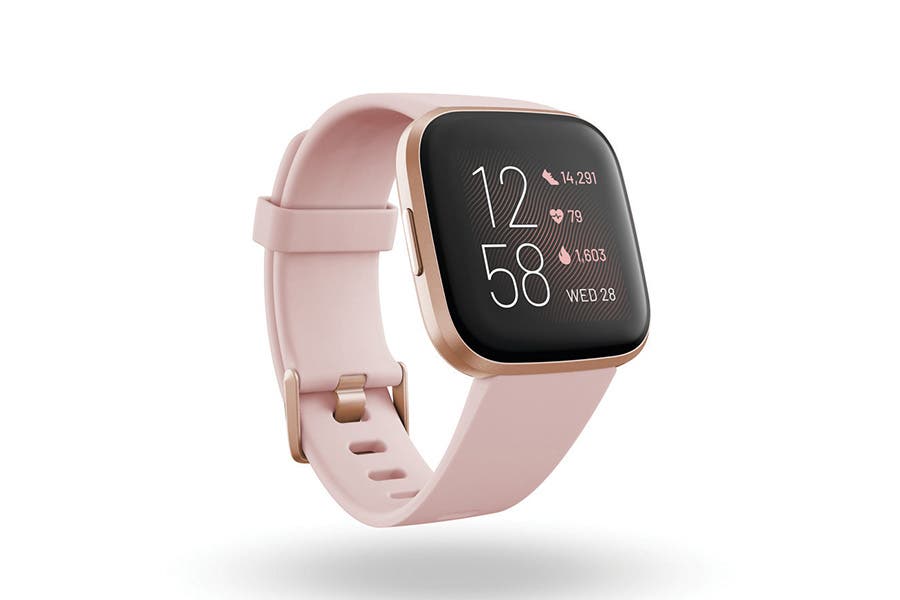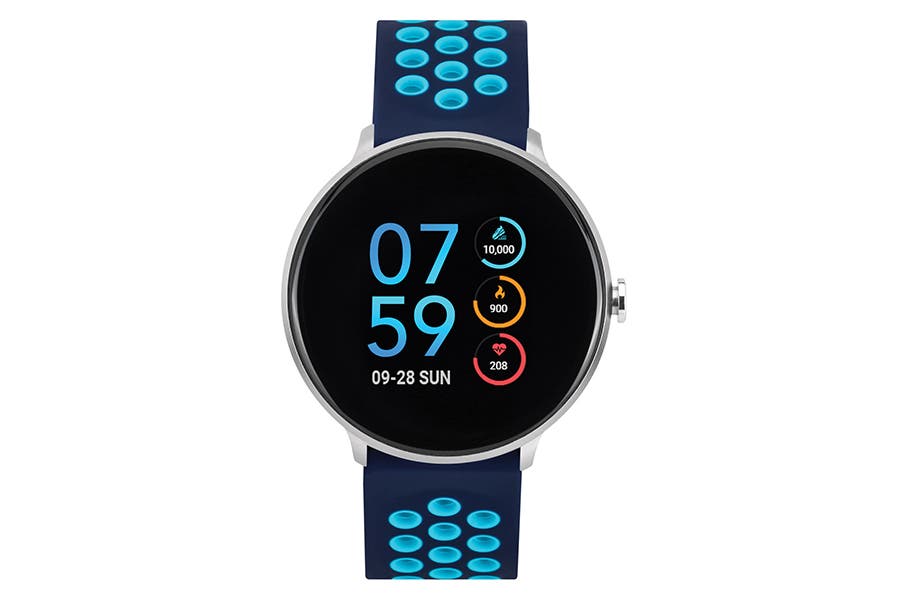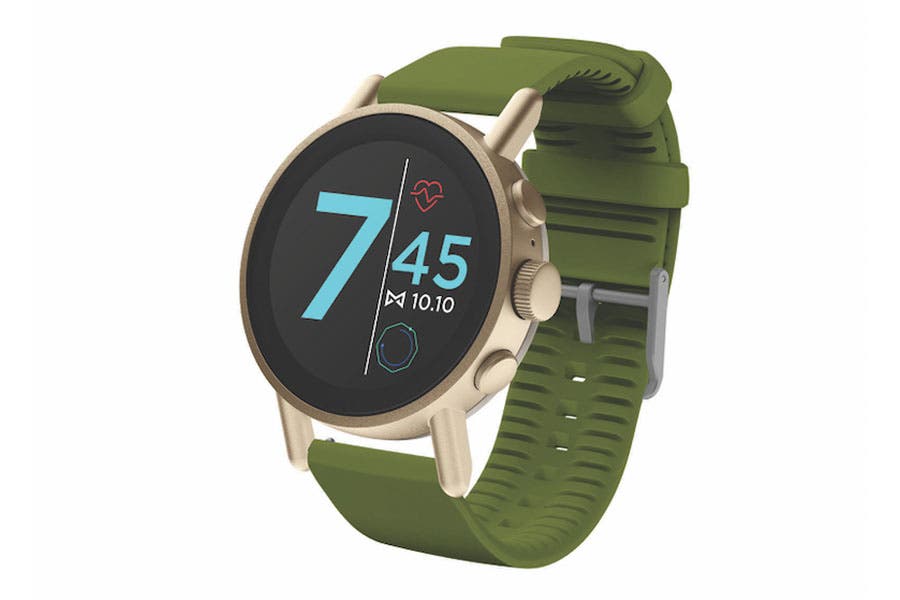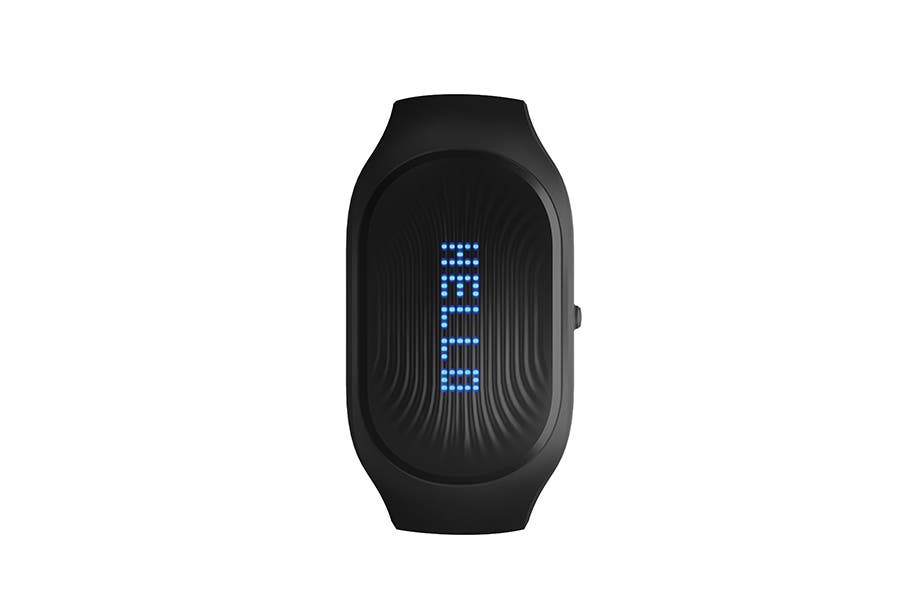12 Best Fitness Apps and Trackers for 2020

These days, fitness technology is about way more than counting steps and calories, and this year’s batch of trackers, smartwatches and fitness apps have moved way beyond collecting metrics and offer more in-depth analysis, functionality, customization and style. Here are our top picks in each category to better help you with technical assistance.
Trackers

Form Swim Goggles
Swimmers can finally get real-time performance metrics midstroke thanks to these super-sleek smart goggles. Through an augmented-reality display, these goggles deliver your distance, split times, stroke rate and stroke count. The numbers appear directly in your sightline as the goggles automatically detect turns, rest periods, intervals and even stroke type. Back on terra firma, sync the goggles to Form’s app to review your swim and track your progress. Each pair comes with five nose-bridge options to guarantee a comfortable, watertight fit.
$200, formswim.com

Fitbit Versa 2
Aesthetically, Fitbit’s Versa 2 doesn’t seem much different from the original, but a few cool features set this model apart. It still provides everything you’d expect from a leader in the industry — activity and sleep tracking, GPS, multiple exercise modes, on-screen workouts, heart-rate monitoring, period tracking, onboard music and access to more than 500 apps — but Versa 2 also dips its toes into the world of AI with an Amazon Alexa integration. (Alexa responds to questions and commands with on-screen text.) Bonus: Users also can use Fitbit Pay to make purchases at participating vendors.
$200, fitbit.com

iTouch Sport
Ringing up at less than $100, the iTouch Sport offers a budget-friendly option for those who want to maximize their fitness dollars. Despite its low price point, the iTouch Sport offers much of the same functionality as costlier models, like activity and sleep tracking, multiple sport modes, heart-rate reading and blood oxygen level monitoring. The iTouch Wearable app isn’t particularly revolutionary, but the watch itself is stylish and well-constructed and can go up to 30 days without a charge!
$95, itouchwearables.com

Misfit Vapor X
The Vapor X is Misfit’s lightest watch so far and can easily go from the gym to the office to a night out, thanks to its classic design, customizable watch face and easy-to-swap straps. Swimproof and GPS-enabled, this smartwatch is powered by Wear OS, Google’s operating system, allowing you to track your activity and workouts with Google Fit and access your texts, Gmail, Google calendar and dozens of other apps like Strava and Spotify.
$280, misfit.com

Whoop 3.0
This wearable is less about the hardware and more about the data it collects and synthesizes. Designed for athletes who want to take their performance to the next level, Whoop analyzes physiological data and assigns a score to your daily grade of strain and recovery. Based on your heart-rate variability, resting heart rate and sleep, Whoop recommends an appropriate exertion level, allowing you to take advantage of your prime training days while avoiding injury and overtraining during periods better suited for rest. Compared to earlier versions, Whoop 3.0 boasts a longer battery life (up to five days), a more comfortable band and Whoop Live, a unique feature that superimposes your real-time metrics, like strain and heart rate, over a video of you doing your workout.
$30/month, whoop.com

GoBe2
The GoBe2 is unlike any other wearable in that it uses your body’s glucose-to-water ratio to automatically detect how many calories you’ve burned and consumed — all without having to manually enter your meals. And, unlike the original version, you don’t need to activate the device before you eat. The band is larger than the average wearable, and it has a simple watch face that displays heart rate, step count and hydration levels as well as the difference between calories consumed and calories burned. GoBe2’s app also provides a macronutrient breakdown of your intake and an activity summary.
$170, healbe.com
Fitness Apps
FlexIt
Don’t use your gym enough to justify the membership fee? Or maybe you can’t decide on one facility? FlexIt allows you to pay for gym time by the minute — perfect for gym dabblers, frequent travelers and the habitually noncommittal. The app uses your location to identify nearby participating gyms and displays their per-minute rates. Scan your bar code at the facility’s front desk to check in and start the clock. Scan the same bar code on your way out to stop it. Your card is only charged for the time you actually spend at the gym.
Free (iOS and Android), flexit.fit
MyPlate
MyPlate’s simple design and extensive food library simplify the tedious task of counting calories, and it acts like a balance sheet for calories consumed vs. calories burned. Just enter the foods you eat and sync up with Google Fit or Apple Health to track your exercise, or manually enter activity instead. You can even scan bar codes on packaged food to collect their data! For those who count macros, there’s a handy chart that displays your protein, fat and carb intake versus your set daily targets. The paid upgrade unlocks an ad-free experience and additional features, including a clean-eating guide.
Free (iOS and Android), livestrong.com/myplate
Optional: $10/month upgrade
Future
Future uses your goals and lifestyle factors to match you to a certified fitness coach who creates weekly workout plans based on your schedule. Using an Apple Watch, the coach monitors your activity and offers feedback. Daily check-ins are designed to keep you on track and help you navigate obstacles, and trainers are available for phone calls as needed. Future is one of the more expensive apps on the market, but before you balk at the sticker price, consider this: Some personal trainers charge that much (or more!) for a single session.
$150/month (iOS), future.fit
Kira Stokes Fit
Devotees of New York City–based celebrity trainer and creator of the Stoked Method, Kira Stokes, no longer need to stalk her Instagram account to find her creative bodyweight complexes and feed off her trademark enthusiasm. With Kira Stokes Fit, you get full-body workouts, bodypart-specific workouts, stretching/mobility programming and “fine-tuning” quick hits. Instructional videos range from a few minutes to an hour-plus, and most require little to no equipment, making this app a great option for at-home exercisers.
$15/month (iOS and Android), kirastokes.com

Asana Rebel
Fair warning: This app is not for yoga purists. That being said, Asana Rebel offers subscribers hundreds of yoga/yoga-inspired workouts — think bodyweight high-intensity interval training circuits sandwiched between Sun Salutations. In addition to high-quality video demos, the app houses guided meditations and audio tracks designed to promote focus and a more restful sleep. Search and choose programs a la carte, or use the Daily Plan function to schedule your workouts and meditations ahead of time. Asana Rebel also will send you reminders to hit the mat, meditate, hydrate and go to bed.
$16.66/month (iOS and Android, three-month minimum, billed quarterly), asanarebel.com
Jefit
If you’re sentimental, then keep your tattered, sweat-stained gym notebook if you must. But, for the sake of your workouts, please upgrade to Jefit. Jefit’s extensive exercise library (complete with demo GIFs and detailed instructions) and Google Fit compatibility make it easy to track and plan your gym time. The Training Report function gives you a snapshot of the time you’ve spent working out, your one-rep maxes on benchmark lifts and the muscles you’ve worked within a specified time range. In addition to lifting your stats from Google Fit, Jefit also provides a designated space for dated progress photos so you don’t have to scroll through your camera roll.
Free (iOS and Android), jefit.com
Optional upgrade: Jefit Elite, $7/month